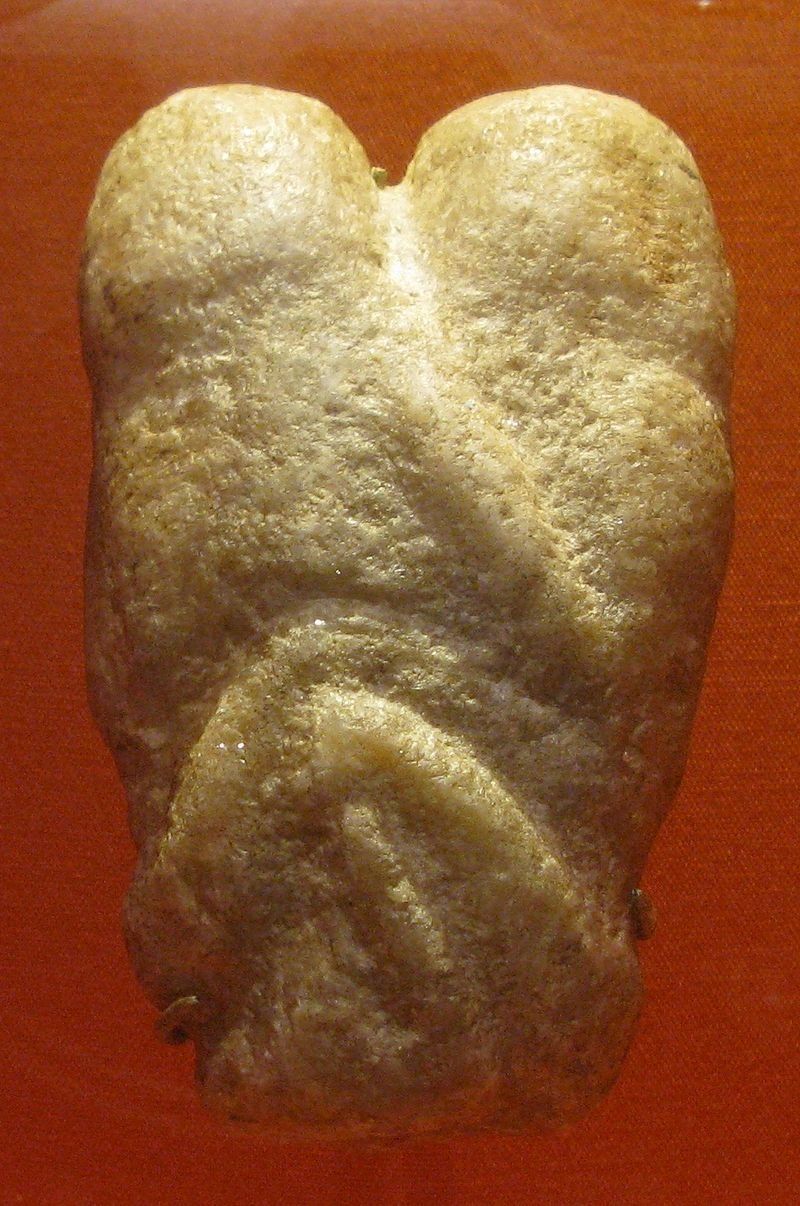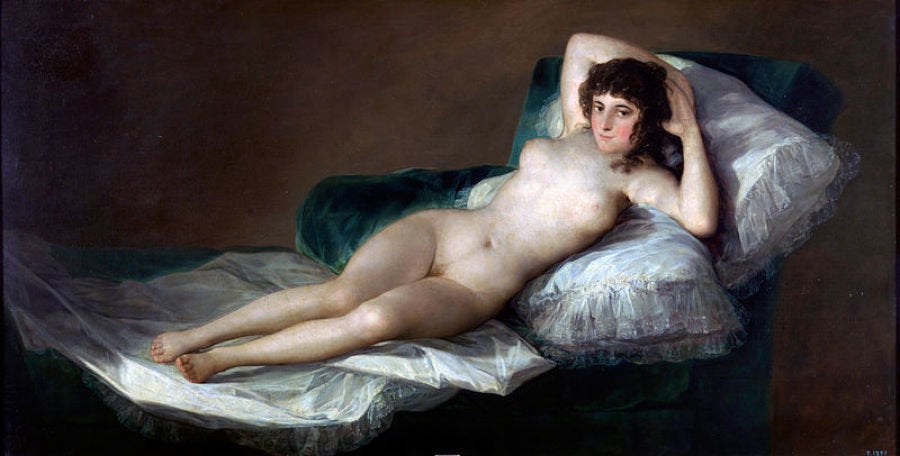Warning: This post contains imagery of two people having sex -- but the sculpture is pretty abstract, so you're probably okay.

Valentine's Day is fast approaching, and so we decided to do the cute thing and search the Internet for the oldest known depiction of two people kissing. I soon discovered that the first rendering of two people kissing skips all the bases and is also the first to show two people having sex.
The image below is the calcite cobble sculpture known as "Ain Sakhri lovers," because it was found in the Ain Sakhri caves near Bethlehem. The little, 102-millimeter love scene is estimated to date back to around 9000 B.C. Yes, around the same time copper was discovered, goats were domesticated, and people began making bricks from clay, one Mesolithic or Epipaleolithic softie let his emotions out into the world, crafting two lump-like bodies smushed together in, what we can only imagine, is pure ecstasy.
The artwork, The British Museum explained, was once a mere pebble, floating down a small river near Bethlehem. A forever anonymous person picked it up, using his or her hands to chisel away at the rock until a passionate embrace blurring bodily boundaries remained.
Although at first glance the artwork might look like a horny Stone Ager threw together the three-dimensional equivalent of a stick figure, further examination reveals the complexity of the form. In an interview with the BBC, Marc Quinn explained his fascination with the object, that forces the viewer to encounter the bodies embedded in the piece as he or she would encounter a new lover.
"To me, what's incredible about this sculpture is that when you move it and look at it in different ways, it changes completely," Quinn said. "And so here you have this thing -- from the side, you have the long shot of the embrace, you see the two figures. From another side it's a penis, from the other side a vagina, from another side it is breasts -- it seems to be formally mimicking the act of making love as well as representing it."
The piece came from a cave southeast of Jerusalem and was discovered in a small museum in 1933 by French diplomat René Neuville, who took interest in the object immediately. Researchers later determined the object was made in a domestic cave, a dwelling reserved for people known as the Natufians, who embraced agriculture and the storage of food. Quinn hypothesizes the recent abundance of food gave the Natufians and their descendants unprecedented new leisure time, which could have contributed to their reflection, creativity, or perhaps libido.
Another potentially relevant detail is that the Natufians had recently made strides in domesticating and breeding sheep and goats. Thus, they were becoming more attune to reproduction, fertility and genitalia. The sculpture is sometimes thought to have been a fertility figure, perhaps inspired by the newly invigorated breeding rituals.
The odd little artwork serves as a portal into another time and place, one that's nearly impossible to imagine. And yet, even 11,000 years ago, sex looks about the same. The figures are entwined so much their bodies dissolve, limbs seeming to wrap around each other ad infinitum. Their individual genders are indecipherable but, from different angles, different parts manifest themselves. It's a wonderfully dynamic image that, despite looking like a malformed walnut, is also radically ahead of its time.
